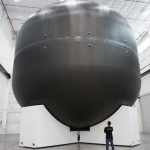Each month we round up some of the top stories in space, entrepreneurship, innovation, finance and technology.
Here’s our round-up for October:
China plans world’s biggest spaceplane to carry 20 tourists
The China Academy of Launch Vehicle Technology in Beijing has designed a simple, one-piece spaceplane whose design can be scaled up to carry more people, academy rocket scientist Lui Haiquang told the International Astronautical Congress in Guadalajara, Mexico. Read more here.

China’s Private Space Industry Prepares to Compete with SpaceX and Blue Origin
Much of the recent media attention to space travel is centred on the activities of flamboyant billionaires and private companies in the US. Left out, though, is the fact that, like in much of the rest of global business, a new generation of Chinese commercial and tourist space endeavours are looking to compete as well.
One of the more intriguing of China’s emerging commercial space launch companies is Expace. Founded in February, the firm will be the lead tenant of China’s first commercial space industrial park in Wuhan, China. Read more here.

Blue Origin conducts in-flight escape test and unexpectedly lands rocket for a fifth time
Upon testing their rocket’s in-flight escape system (a means of bringing passengers to safety if something were to happen during launch), Blue Origin ended up with a safely recovered crew capsule and an unexpectedly intact New Shepard rocket. Read more here.
Watch the replay of the live webcast below:
Musk offers more details about Mars mission architecture
SpaceX Chief Executive Elon Musk provided some additional details on October 23rd about a Mars transportation system he unveiled last month, including plans to test in the near future one of its key technologies. In a Reditt AMA he answered several questions by users of the site. Read more here.

EU’s new space policy to invest in startups, boost private investment
The European Union’s executive commission on Oct. 26 unveiled a new space strategy that promises public investment to stimulate the creation of space start-up companies. Read more here.


